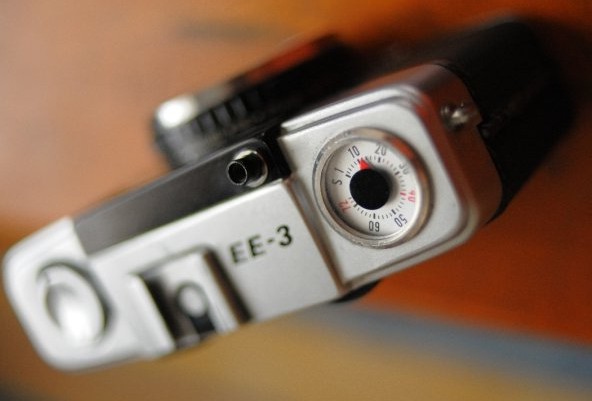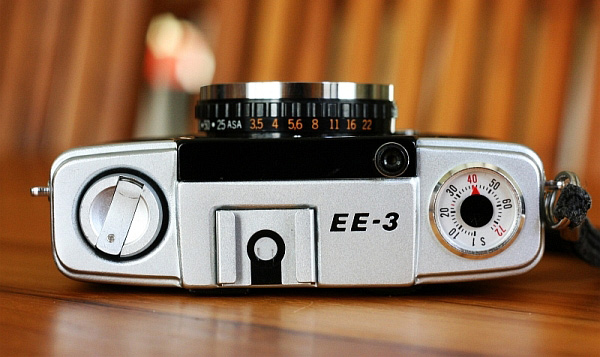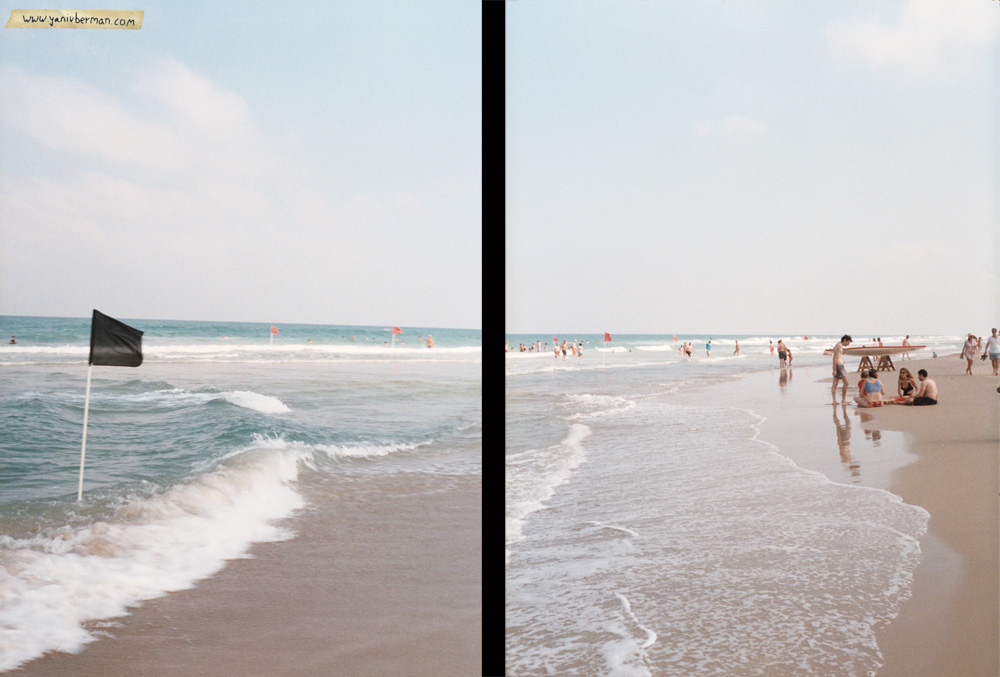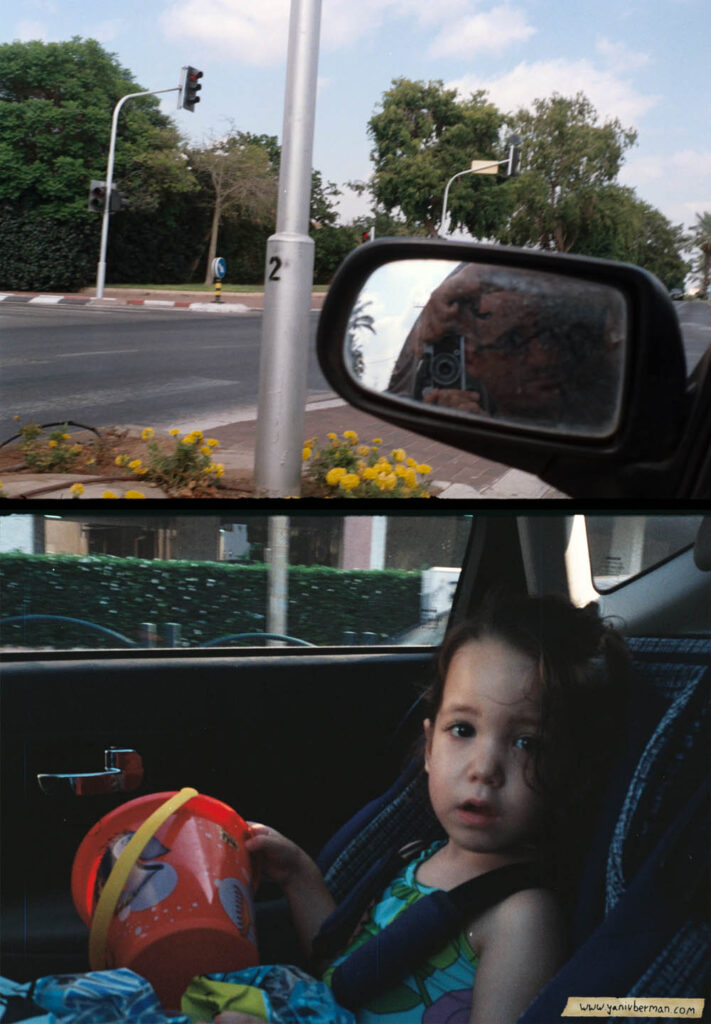Olympus Pen EE3
A few words should be said about the way I percept analog photography before engaging my review (or rather written experience) on this small and surprising camera. When I choose to take analog camera to my outdoor exploring, I’m usually considering the camera itself as an inseparable part of the creation. Suddenly the tool is no longer a mere gadget I operate in order to have a photo, but rather some kind of a brush and color I pick for drawing the impressionist image of my active reality. I guess it could be said also on digital, but my feeling is that the digital era brought a lot of sharp and very distinct realism to the documentary moment taken by the lens. When using my digital equipment I feel the urge to achieve the best results from the processor and lens. When living in the analog realm, the expectations from the tools in use (camera, lens and film) are at another dimension. I start looking after the little odd qualities I usually regard as mistakes or defects, and find them more appealing when staining the delicate texture of the celluloid. Again, people may claim that you can Photoshop anything today into the picture, but the analog image, even damaged and totally wacked, is something that you’re usually prefer on leaving alone and let it be as it was intended by the moment. That’s why I like old cameras, and that’s why I search for those cheap and very common cameras, worn by use but still grinding by the clicks!
By the standards I described above, the Olympus Pen EE-3 (The EE Stands for Electronic Eye) is a must-try! It is a real Lomographic camera, and I wish it will be re-discovered and used by all those fast and happy-clicker shooters. The main uniqueness this camera brings with it is the half-frame concept, introduced the first time to the world in 1959 by the Pen series, designed by Maitani Yoshihisa of the Olympus Company in Japan (Mickey from Toronto corrected me about this bit – 35mm half-frame cameras are dated far more early then that. He, for one, own a Half-Frame Ansco Memo from 1927). The concept, scorned by many film lovers, is about using only half size of the common 35mm frame (18x24mm), and by that exploiting the film and producing more photos from the 135 cassette (72 instead of 36). Sure the product you receive has less detail (and tends to be grainy), but by playing with this unique form, you can make a conceptual use of the double frame (or triple), displayed adjusting to one another and sharing two sides of a photographic idea. I’m calling all the Lomographers among you, which regards shooting pictures as a way of exploring the far edges of the duplicated reality, to check this fabulous vintage tool for your purposes and enjoyment.

But using only half of the 35mm frame is not the only thing that makes this camera an unprofessional though semi-artistic brush. The Olympus Pen EE-3, introduced in 1973, is designed by all standards as a Point & Shoot, fully automatic camera, aimed originally to the people who want to push only one button in the process of taking a picture. The name of the brand “Pen” hints that this camera is easy and fast to use, like a pen you pull from your shirt. At first I had my doubts and tried to push and rotate any button or ring installed in this small plastic-metallic box, but soon enough I realized I shouldn’t overdo it. Only one thing is required to do prior to the shooting: The camera enables you to adjust the sensitivity of the film by rotating the ring around the lens to the right position (25 to 400ASA). The light-sensitive electronic-eye around the lens (A selenium meter window, which gives the camera its iconic look and is totally solar – no batteries required for this one!) will adjust to the light and set the aperture automatically at the moment of releasing the shutter, which is set at a fixed speed of 1/200 second. If there is not enough light for shooting at these settings, a red flag will show at the viewfinder, and you’ll be forced to point the camera against a more lighted area.
When shooting indoors you may set the ring to aperture priority, ranging from f/3.5 to 22. At this position the shutter speed will be fixed at 1/40 second. The EE-3 model includes a Flashmatic System which means “automatic flash exposure”. When using a flash connected to the matching strobe, you can set the ring (the only one installed in the camera) instead of ASA or Aperture to Object distance (1 to 4m). The Flashmatic system will do the aperture exposure calculations for you.


The lens equipped in the Pen is a D. Zuiko Wide Angle with a great depth of field, required in a Point & Shoot camera with no focus ring. This way you have all your objects always in focus. I guess most of you SLR lovers find it so very strange, but that’s only one more reason to focus the search of your artistic point of view in other aspects of the use. The lens on this camera is 28mm, which is equivalent to 40mm on a full 35mm frame.
Running amok with the Olympus Pen is fun. Having 72 pictures in stock makes you pay less attention than usual to the quality of your work, but the way I would recommend to do it, is by taking two different point of view pictures of a one idea or story you wants to display. Here is what I achieved with one roll of Fuji 100 ASA, while roaming to the Hezliyya beach and the Tents demonstration in Tel-Aviv, at the almost unbearable heat of August 2011:







